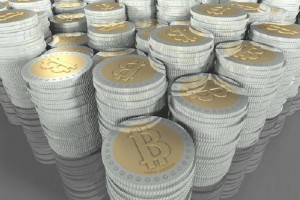Latest Posts
-
Finance 0
UK Retail Sales In Strong Decline
To quote Bill Clinton, “It’s the economy, stupid…”. There has been much speculation about Theresa May’s motivation for calling a general election three years early, when she has an absolute majority of 12 in the Commons and when her Brexit legislation (so far) has gone through parliament unscathed. Opinions vary with some claiming that she could not resist polls showing a 20 point lead over the opposition Labour Party; a desire (denied) to gain her own mandate; her claim to want a strengthened mandate to improve her negotiating position with the EU (utter nonsense as it can’t improve the position of a sovereign state one iota – ...On April 26, 2017 / By Kurt Osterberg -
Finance 0
Amazon-Proof: The Blueprint For Surviving The Retail Apocalypse
We all know that Amazon Inc. (AMZN) has completely disrupted the retail space. With more consumers doing much of their shopping online — many retail companies are living on borrowed time. Especially when you consider that almost half of U.S. households are now Amazon Prime subscribers, according to a report from Consumer Intelligence Research Partners. But contrary to popular belief, not all retailers are doomed. Sure, department stores like Macy’s and J.C. Penney are sleepwalking into their graves. There’s no hope for them. But a handful of brick-and-mortar retailers have emerged as Amazon-proof. As senior analyst Jonathan Rodriguez re...On April 26, 2017 / By Kurt Osterberg -
Finance 0
A Rising (Central Bank) Tide Turns Everyone Into A Genius
Until the system implodes–you’re a genius. So you’ve ridden the markets higher–stocks, housing, commercial real estate, bat guano, quatloos, you name it–everything you touch turns to gold. What can we say, bucko, other than you’re a genius! It’s a market truism that rising tides lift all boats. But that’s not the really important effect; what really matters is rising tides turn everyone into a genius–at least in their own minds. Those of us who have been seduced by the Sirens’ songs of hubris know from bitter experience how easy it is to confuse a rising tide with speculative geni...On April 26, 2017 / By Kurt Osterberg -
Finance 0
How The S&P 500’s P/E Ratios Can Levitate
Economics writer Robert Samuelson is worried. Specifically, he’s worried about why stock prices have risen so much in response to Donald Trump’s election as U.S. President on 8 November 2016. In worrying, he not only conveys the conventional wisdom that seeks to explain the “Trump Rally” as some sort of outpouring of animal spirits linked to the promised policy changes that Donald Trump advocated on the 2016 campaign trail, but also zeroes in on the historically elevated price-to-earnings (P/E) ratio of today’s stock market. The theory of the Trump Rally is simple: He has brightened the economic outlook. Big ...On April 26, 2017 / By Kurt Osterberg -
Finance 0
About Caterpillar’s “Tremendous Earnings Growth”, There Is Just One Thing…
With CAT and MCD accounting for over 100 of the 250+ Dow points yesterday, one would think that, as CNBC has repeatedly stated yesterday, these two companies are posting “tremendous earnings growth.” And, in a way they are… a non-GAAP way. Because while CAT reported adjusted EPS of $1.28, up exactly 100% from a year ago- almost as if it was goal seeked – something far less appetizing emerges when looking at CAT’s actual, GAAP EPS, which happen to be exactly one-quarter of the non-GAAP number, or $0.32, a 30% drop from a year ago. And another quick look at these “one-time restructuring costs”, which ...On April 26, 2017 / By Kurt Osterberg -
Finance 0
Australian CPI Only OK – AUD/USD Slides
Australia releases its inflation figures only once per quarter, making every publication a big market-mover. Volatility did not disappoint this time either. The headline q/q figures came out at with a minor miss of 0.5% instead of 0.5% expected. Year over year, the miss was similar: 2.1% against 2.2% projected. AUD/USD still responded with a downfall, dipping towards the very round level of 0.75 that had worked as a cushion also in the past. Further support awaits at 0.7450 and 0.7375. Resistance is at 0.7540 and 0.7610. More Australian inflation measures Looking deeper into the data, Australia’s core CPI, called “trimmed mean”, has ...On April 26, 2017 / By Kurt Osterberg -
Finance 0
Maybe A Bit More Complex Still?
One of the defining characteristics of the 2011 crisis was dollar swaps. Almost all attention was paid to PIIGS and focus on the European banks holding their debt, as well as the very real possibility that all would break up the euro. Behind all that was the same dollar troubles as in 2008, and for the very same reasons. The offshore “dollar” market was once again under severe strain, so much so it convinced the majority of participants to get out of the business as best as possible (leaving, as noted yesterday, mostly the Japanese). The original dollar swaps originating from the Fed to foreign official institutions, augmented during the...On April 26, 2017 / By Kurt Osterberg -
Finance 0
Aussie Dips After Economic Data Released
The Australian dollar was down 0.27 percent by midday on Wednesday trading at 0.7518 after economic data was released earlier in the trading session. Australian consumer price inflation scarcely topped 2 percent in Q1 for the first time since 2017, creating indicators that the danger of deflation may be passing. The Reserve Bank of Australia’s preferred measures of underlying inflation rose to an annual pace of 1.8 percent in Q1 2017, up from 1.5 percent and comfortably in-line with analyst expectations. Core inflation is not expected to exceed 2 percent until late 2018 and the RBA has repeatedly warned of the dangers of trying to expedite ...On April 26, 2017 / By Kurt Osterberg -
Finance 0
USDCAD Elliott Wave View: More Upside
Short term Elliott Wave view in USDCAD suggests the decline to 1.322 ended Intermediate wave (X). Revised view suggests that the rally from there is unfolding as a double three Elliott Wave structure where Minute wave ((w)) ended at 1.3525 and Minute wave ((x)) ended at 1.3406. Minute wave ((w)) is subdivided as a Flat Elliott wave structure where Minute wave (a) ended at 1.3338 and Minute wave (b) ended at 1.3258. Near term, the pair is within a Minute wave (x) pullback to correct the cycle from the 4/24 low in 3, 7, or 11 swing before the rally resumes. We don’t like selling the proposed pullback and expect buyers to appear once wa...On April 26, 2017 / By Kurt Osterberg -
Finance 0
E GBPUSD Taking-Off
Cable is making a strong rise away from 1.2364, clearly in an impulsive fashion which can see an extension up to 1.3140 area for wave C. That said, recent slow price activity was sub-wave 4), which may have already found a base and current intra-day rally may be the start of sub-wave 5) of three. GBPUSD, 4H...On April 26, 2017 / By Kurt Osterberg
Top Posts
-
 The Importance for Individuals to Use Sustainable Chemicals
The Importance for Individuals to Use Sustainable Chemicals
-
 Small Businesses: Finding the Right Candidate for the Job
Small Businesses: Finding the Right Candidate for the Job
-
 How to Write the Perfect Thank You Letter After Your Job Interview
How to Write the Perfect Thank You Letter After Your Job Interview
-
 3 Best Large-Cap Blend Mutual Funds For Enticing Returns
3 Best Large-Cap Blend Mutual Funds For Enticing Returns
-
 China suspected in massive breach of federal personnel data
China suspected in massive breach of federal personnel data














